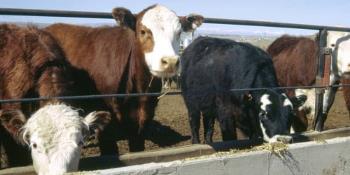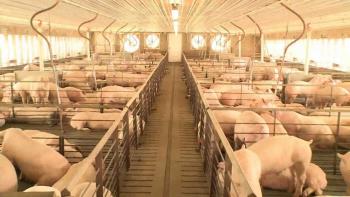COVID-19 has focused attention on the dominance of hog and beef packing represented by the “Big Four” comprising Tyson Foods, Smithfield Foods, JBS USA and Cargill. Activist group R-CALF USA has lobbied Congress and the President to investigate "whether physical and geographic restructuring of the meatpacking industry is required to disaggregate and decentralize beef processing capacity”. Problems emerged follow a fire in a Tyson Foods Kansas packing plant that impacted farmers shipping cattle from grassland and feedlots in 2019.
 The current disruption of both pork and beef production due to COVID-19 has generated concern among legislators representing cattle and hog-producing states. This is reflected in the retail food sector facing shortages and interruptions in supply, extending to consumers. Rationing has commenced in military commissaries and will surely spread to the retail market.
The current disruption of both pork and beef production due to COVID-19 has generated concern among legislators representing cattle and hog-producing states. This is reflected in the retail food sector facing shortages and interruptions in supply, extending to consumers. Rationing has commenced in military commissaries and will surely spread to the retail market.
There is probably no concerted plan among the four major packers to in any way collude to rig the market. Unfortunately, in the pursuit of efficiency and economies of scale, large plants are increasingly responsible for packing a larger proportion of hogs and beef cattle raised.
COVID-19 emerged as a black swan and, in all probability, could not have been foreseen even in early 2020 following emergence in China. Inputs into plants such as water, power and labor were taken for granted until the advent of COVID-19. Unfortunately, in the absence of an effective vaccine there can be no assurance that labor will be available at a reasonable cost or that previously projected production levels will be maintained in the intermediate future irrespective of Executive Orders.
 In contrasting the red meat and chicken industries it is evident that integration has facilitated both long term planning and the response to COVID-19 among as many as 20 top producers representing 90 percent of chicken production. Apart from the lower prevalence of the infection among workers in poultry plants compared to hog and beef plants (with the exception of one Georgia county) chicken integrators are able to adjust more rapidly to challenges represented by disease among workers and changes in the marketplace. It remains to be seen how the large hog integration in Oklahoma is impacted by COVID-19 compared to industry peers that are not integrated.
In contrasting the red meat and chicken industries it is evident that integration has facilitated both long term planning and the response to COVID-19 among as many as 20 top producers representing 90 percent of chicken production. Apart from the lower prevalence of the infection among workers in poultry plants compared to hog and beef plants (with the exception of one Georgia county) chicken integrators are able to adjust more rapidly to challenges represented by disease among workers and changes in the marketplace. It remains to be seen how the large hog integration in Oklahoma is impacted by COVID-19 compared to industry peers that are not integrated.
It is clear that when the immediate COVID-19 emergency is resolved, irrespective of what Administration is in control in 2021, there will be Congressional, USDA, DOJ and DOC investigations into the structure of the red meat industry and interactions among the major companies. This will re-visit the Town Hall style meetings arranged jointly by the USDA and DOJ under the Obama Administration leading to an order in terms of GIPSA.